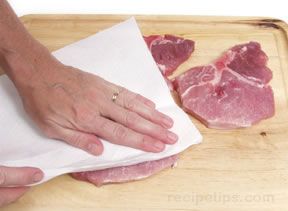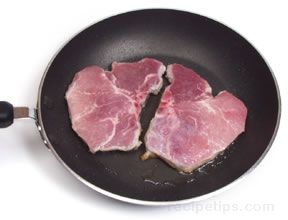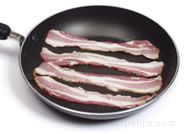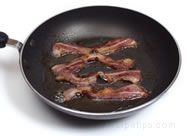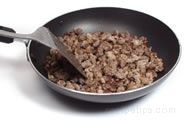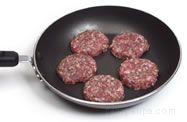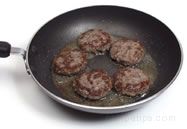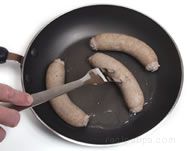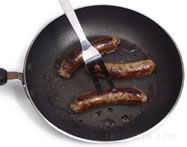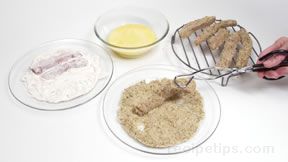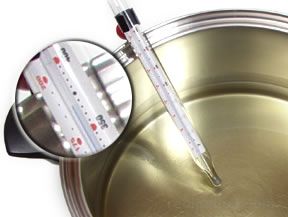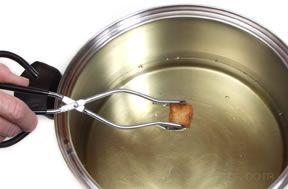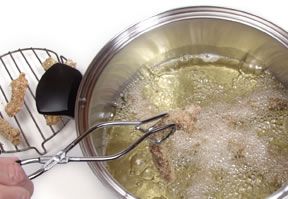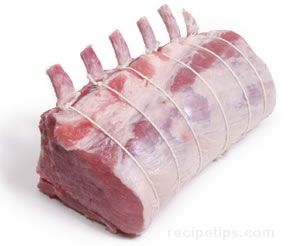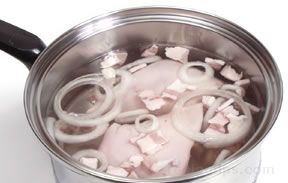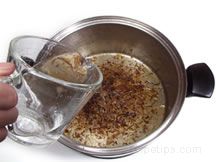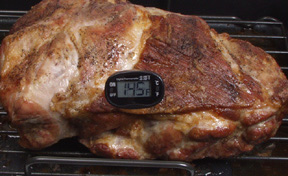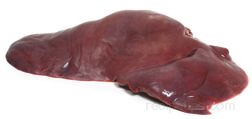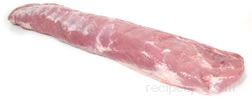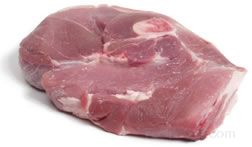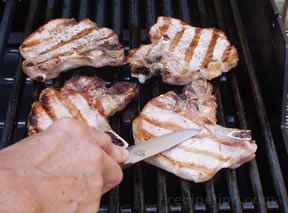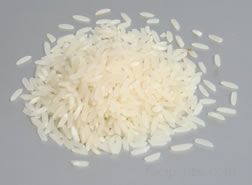|
Frying is a dry heat cooking method, which is a quick and simple way of cooking pork. It can be accomplished by the use of two different methods, pan-frying and deep frying. Both methods work on the principle of using hot oil to cook the meat, producing cuts of pork with a crispy brown outside and juicy, flavorful meat inside. The meat is often coated with a thin layer of flour, bread crumbs or batter. Smaller cuts of pork are generally used for frying rather than larger cuts, such as roasts and hams. The best choice of pork cuts for frying are chops, steaks, ham slices, Canadian bacon, bacon, sausage, and ground pork. Pan-Frying: When pan-frying pork, use a heavy skillet with deep sides. The cuts of pork can be prepared by simply sprinkling with salt and pepper, marinating, or coating with your favorite seasonings to create a desired flavor. Excess fat should be trimmed and the pieces dried off with a paper towel before frying. If pieces are coated with flour or bread crumbs, they should be placed on a rack and allowed to dry. This may require 20 to 30 minutes. Allowing the pieces to dry will provide for even browning of the meat when frying.
Bacon: When frying bacon, place the strips into a heavy frying pan that has not been preheated or had oil added. Fry the bacon over medium low heat. The amount of cooking time will depend on the thickness of the slices and desired doneness, but will generally vary from 7 to 12 minutes.
Ground Pork: Frying ground pork generally does not require the addition of oil unless the meat does not contain sufficient natural fat. Ground pork can also be made into patties and then fried. The meat is done when all the pieces are lightly browned or the patties are browned on the outside and no longer pink in the center. The excess fat should be drained off before serving.
Sausages: Pork sausages can also be cooked using the pan-frying method. If they are precooked sausages, they can be placed in an unheated frying pan and cooked until nicely browned and heated to an internal temperature of 140°F.
If they are fresh sausages, it is best to poach them for a few minutes before frying to ensure that they will get fully cooked without the outer layer becoming over done. Once they have been poached, fry them in the same manner as the precooked sausages. Do not pierce the sausages until after they have been poached and are in the frying pan, otherwise too much of the fat may escape while poaching, causing the sausages to be dry. Deep Frying: When meat is deep fried, it is cooked by the transfer of heat from the oil used in deep frying and not directly from a heat source. Generally the cuts that are best for deep frying are smaller sized boneless cuts, such as cubes, strips and cutlets. Deep frying larger cuts make it more difficult to produce a cooked piece of meat that is properly done in the middle and not over done on the outside.
To fry, fill a deep pan or an electric deep-fat fryer with enough oil so that the cuts you are cooking can be completely submerged in the oil. Heat the oil to between 350°F and 375°F.
With either method of frying, an important part of the process is keeping the oil at the proper temperature. Once the meat is placed in the hot oil the temperature of the oil will drop. But, if the oil continues to bubble consistently, it will cook the pork properly. If the temperature of the oil becomes too hot, the outside of the pork cut burns before the inside is done. To prevent this from happening, the temperature may need to be turned down a little once the meat starts browning, but not too much or the meat will be greasy. Controlling the temperature of the oil is an important part of producing delicious fried pork cuts. Shown below are some additional tips on frying pork.
| ||||||||||||||||||||||||||||||||||||||||||||||||||
Loading
Frying Pork

Provided By
RecipeTips
RecipeTips

Loading
There currently aren't any reviews or comments for this article. Be the first!
Advertisement
Advertisement




